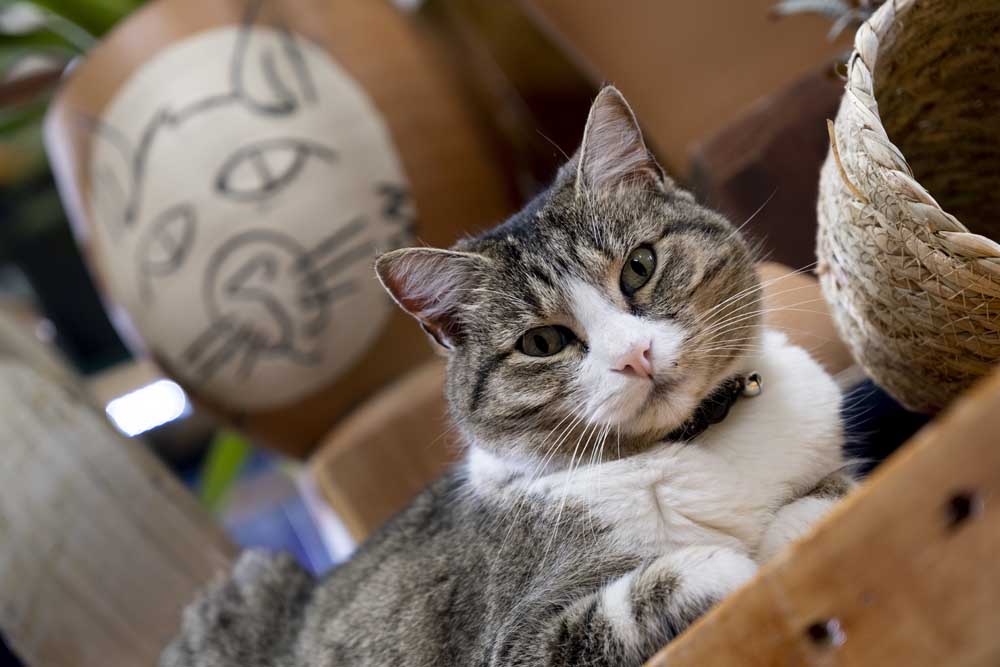Succulent Love: How to care for succulents
Published 3:31 pm Thursday, March 4, 2021

- Daisy the garden cat of RCB Gardens on Wednesday March 10, 2021. (Michael Cavazos/ News-Journal Photo)
With their natural charm and easy maintenance, succulents have become the trendiest plants around.
They come in all shapes and sizes, in an array of gorgeous colors and have intriguing textures. Their beauty has captured the eyes and hearts of many people and they have become a favorite among modern designers.
Trending
“The first year that we went into business, we heard it said that succulents are not going away anytime soon — and they aren’t,” said Cathy Page, owner of RCB Gardens in Longview. “So we enclosed a greenhouse specifically so we can sell succulents year-round.”
Succulents are among the top sellers at RCB Gardens and many other nurseries across East Texas.
The reason?
In addition to their uniqueness and beauty, they are extremely low maintenance plants with water-holding capabilities that make them able to survive in long periods without water. So for young urban dwellers who work long hours and travel frequently, succulents are the ideal way to brighten up a space.
While there are many different types of succulents, Page said string of pearls and echeveria are among the most popular types she sells. String of pearls is a succulent that will cascade out of its container or hanging basket with little “pearls” that resemble a beaded necklace of green, pea-like foliage. Echeveria is a leafy succulent in which leaves form a rosette, resembling a flower.
“String of pearls is the most popular seller for me. They’ve been around forever but they’re hard to find,” Page said. “Nearly everybody’s grandmother had them and it’s something familiar. They’re very unique; there’s nothing exactly quite like them. … People also love the echeveria because of the rosettes; they look like flowers.”
Trending
The hardiest succulent that RCB Gardens sells is sedum, a succulent that forms a ground covering.
For those who have a loved succulent, Page said it’s easier to make more as the plants are easy to propagate. To propagate a succulent and grow another, simply pick a leaf off of the plant and place it in soil. It will take nutrients from the leaf and the soil and grow its own roots. It can eventually be potted and grow into another plant.
“Succulents grow slowly but they grow really well,” she said.
The keys to a thriving succulent, Page said, are light and water.
“One thing we know for sure is the brighter the color, the more light the succulent will take. For indoors, especially with lower light situations, you want a green plant,” she said as she pointed to succulents that are related to aloe.
As for water, Page said it’s recommended to use a planter with a drain hole. If a planter doesn’t have a drain hole, just be careful about the amount of water provided.
Tips for Succulent Care
Light: Place succulents near the brightest possible indoor light. If you have multiple succulents, it’s recommended to rotate their position, Page said, or else they will begin to “reach” for the sunlight.
Water: The amount of water a succulent needs depends on the season. “When the plant is actively growing, it’s going to require more water,” Page said. “In the wintertime, it might only need to be watered once every week and a half to two weeks, but in the summertime, water it whenever the soil is completely dry.”
Misting: While many people think succulents are meant to be misted, Page said this is actually a myth. “Go ahead and water directly into the soil. When you water, unless you’re using a planter without a drain hole, you should water until it comes out of the bottom. You want to really saturate the roots.”
Soil: It’s recommended to use a well-draining soil, and there are many soils made specifically for succulent care, Page said.
Fertilization: This is only necessary during the active growing season of spring or summer, Page said. “We use Superthrive; it’s a basic plant vitality fertilizer,” she said.







